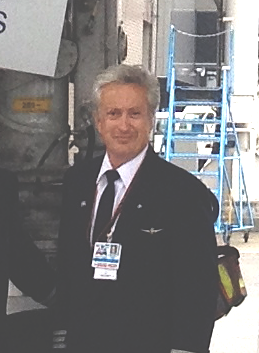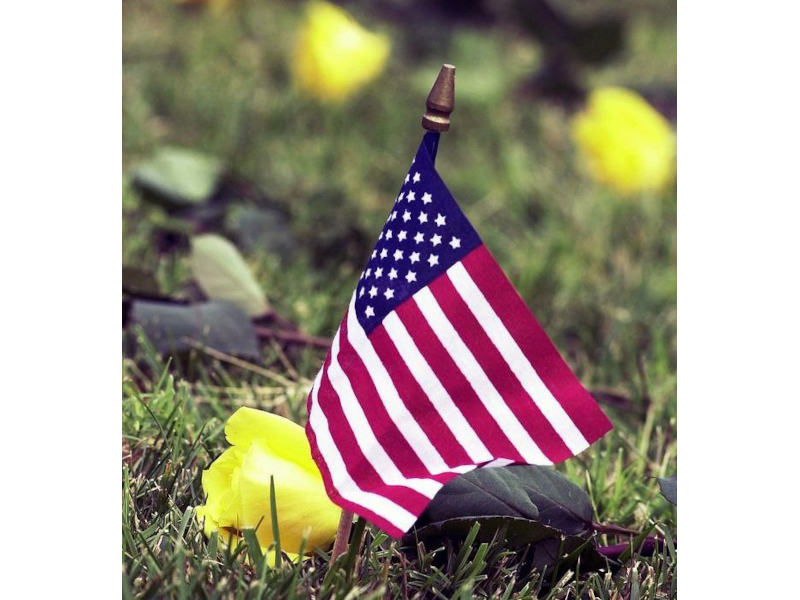Pilots were center stage on 9/11. In particular, 19 pilots who knew how to take off but not land; 19 pilots who boarded four planes that Tuesday morning intent on starting a war with America.
But scores of other pilots were on deck that morning, getting ready for take-offs, already in the air or preparing for landings.

Andy Shane was among the hundreds of commercial pilots in the air that morning. He was flying for American Airlines that morning.
Shane’s trip began on Sept. 9. He was assigned to fly from Dallas to Dulles Airport outside of Washington, D.C. He got up early that morning and stowed his gear in his personal airplane. Shane lived about 45 minutes outside of Dallas, and whenever he could, he commuted to work in his plane.
MORE: 9/11 Retrospective: One Airline Pilot Ponders Possibility of Other Terrorists That Day
“It was great,” he said. “I could fly to Dallas and park my plane right next to my airliner. I’d chain it to the chain-link fence, and it’d be right there when I got back.”
The weather didn’t cooperate that day, though. Morning fog set in and didn’t burn off in time for him to fly. So, he transferred his gear to his car and raced to Dallas. The flight to D.C. went off without a hitch.
A native of western Maryland, Shane had arranged to have a day’s layover on Sept. 10 so he could visit his parents and stop in to see his mother-in-law in Silver Spring. He rented a Jeep, brought bagels to his mother-in-law and then headed out Interstate 70 to the small village of Williamsport where he grew up. He spent the day with his parents at an Elderhostel event before heading back to the D.C. area to spend the night and get ready for the next leg of his itinerary.
[adrotate banner=”13″]
Shane’s Sept. 11 began early, around 5:30 or 5:45 a.m., he recalled. He was flying from Dulles to Chicago and from there back home to Dallas. On his way to the runway, Shane said he taxied past his colleague Chip Burlingame’s plane. Burlingame, also a pilot for American Airlines, was to push off at 8:10 a.m. with Flight 77 to Los Angeles. Instead, his was the plane that hijackers flew into the Pentagon.
The flight to Chicago was uneventful, Shane said. He was filling out paperwork and preparing for the next leg that would take him home to Dallas when a flight attendant grabbed his elbow, commanded, “Come with me,” and pulled him into a dark room. Shane said he was thinking to himself, “How do I get out of this without hurting her feelings?”
Instead of seeking an illicit liaison, the flight attendant dragged Shane into a darkened room where other American crew members were watching the news of the attacks in New York.
The FAA hadn’t grounded planes by the time Shane’s was supposed to board passengers, so the somber crew got everyone seated. Shane was fully aware that two planes had flown into the Twin Towers, and he wanted to reassure those flying with him that morning.
“My contribution to 9/11 was, I told my passengers that I’m their captain for the trip to Dallas, and I had one objective for the next three hours,” which was to get them all safely to Dallas, he said. “I told them, ‘The whole crew is devoted to your safety and security.”
Before he could finish, an agent boarded the plane and told Shane he wasn’t going anywhere; all planes had been grounded. All commercial flights remained grounded until Sept. 13. Small planes, like the one Shane had hoped to fly to work on Sept. 9, were grounded far longer, about six weeks total.
Looking back, Shane, a former Air Force officer who’s been flying for American for 33 years, said he thinks it was a miracle the attacks succeeded.
[adrotate banner=”19″]
“Those guys were 16th century commandos,” Shane said. “It should have been obvious they weren’t pilots. For one thing, several of them couldn’t speak English, and you have be English proficient to be a pilot.”
He also laments that airlines didn’t learn more from the two cockpit breaches that happened before 9/11. One of those involved a FedEx pilot who was facing firing for falsifying his hours flying. According to Shane, Auburn Calloway joined a FedEx flight in Memphis as a deadhead passenger. He brought a hammer and a spear gun with him. Calloway was able to breach the cockpit and attack the crew, nearly killing the flight engineer and severely injuring the pilot and co-pilot who were eventually able to subdue him and land the plane.
The other pre-9/11 cockpit breach involved a four-engine regional jet in California, Shane said.
“It’s shameful we didn’t learn from those events,” Shane said.
The Israeli model is to have the cockpit completely isolated from the cabin, and that’s a model Shane believes U.S. airlines should follow. So do some pilot unions who are pushing to have secondary barriers to protect cockpits.
“We’re not impenetrable,” he said. “You’re not going to stop someone who cleverly infiltrates.”
He recounted what he believes to have been a close call just a few years ago in Frankfurt, Germany.
He was serving as co-pilot on that flight. He and the pilot had just checked in when an agent came to them and said she had a regional airline pilot who wanted to occupy the jump seat on the flight.
“That had never happened in 30 years of flying,” Shane said. “The FAA sometime, but never other pilots.”
Usually, other airline crew members who fly are seated with the passengers, he explained.
[adrotate banner=”54″]
The pilot was a Somali national who had proper credentials, the flight attendant told the pilot and Shane. She assured them the man has been security vetted. But he also had a gym bag, and that’s what made Shane nervous.
“It made the hair stand up on my neck,” Shane said.
To placate the agent, the captain says, “Okay, he can have the seat, and invited the Somali to join him us the cockpit,” Shane continued.
Out of sight and hearing of the Somali pilot, the captain asked one of the flight attendants to find a seat for him with the passengers. They seated him in first class.
MORE: 9/11 Retrospective: Events Commemorate the 20th Anniversary
The flight went off without a hitch, but Shane said he was nervous the entire way home, remembering other cockpit breaches and wondering if he and his pilot had averted such a catastrophe for themselves by moving the Somali pilot to the passenger area. Something about the request to fly in the jump seat and that gym bag, they just didn’t sit right.
“We were both terrified,” he said.
In America, the TSA does an extraordinary job of keeping airflight safe, Shane said.
“TSA, in my experience, has batted 1,000,” he said. “I’ve been dazzled by how good, perceptive and patient they are.”
Debbie Reddin van Tuyll is a writer for The Augusta Press. Reach her at debbie@theaugustapress.com.
[adrotate banner=”51″]













